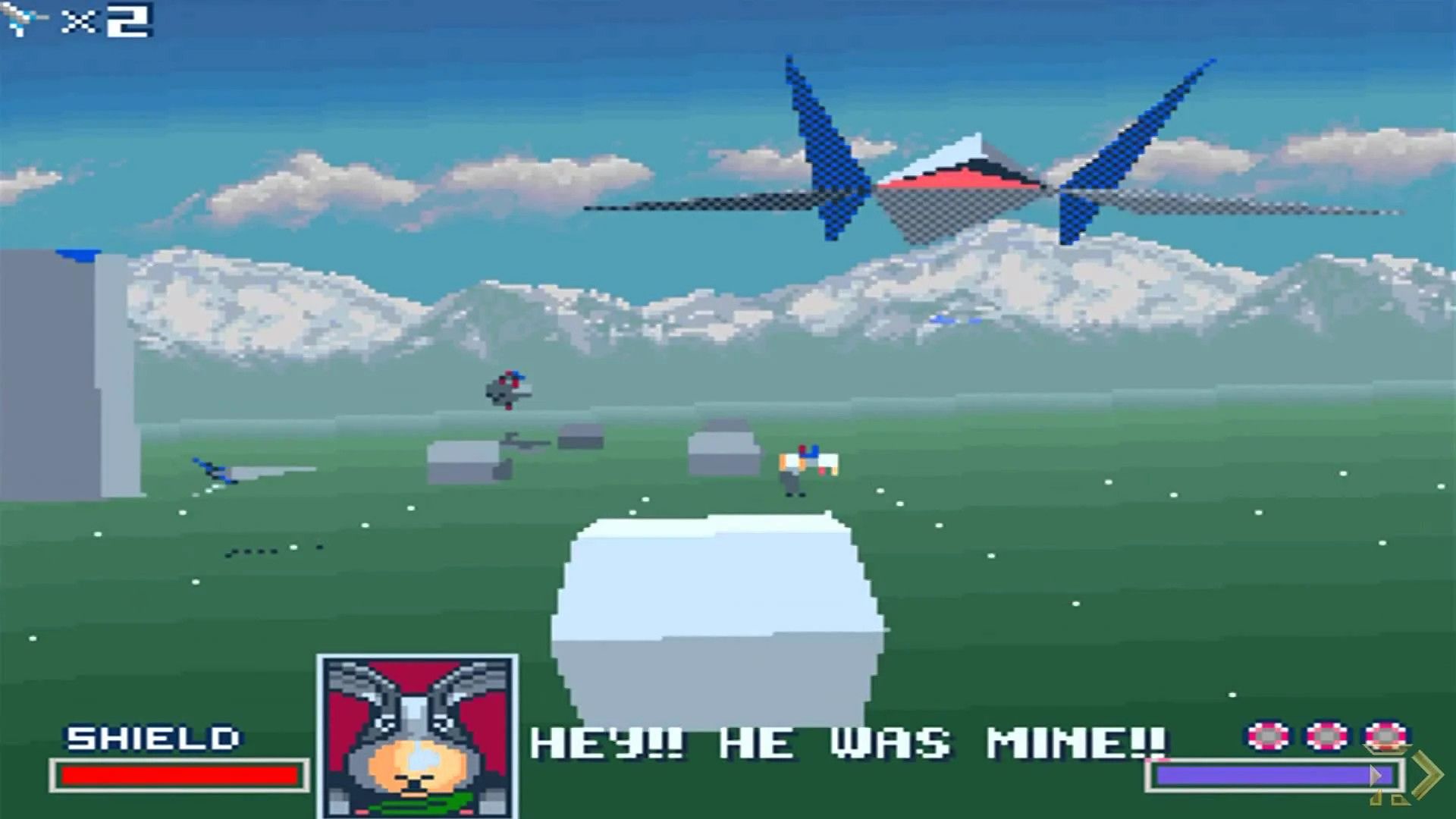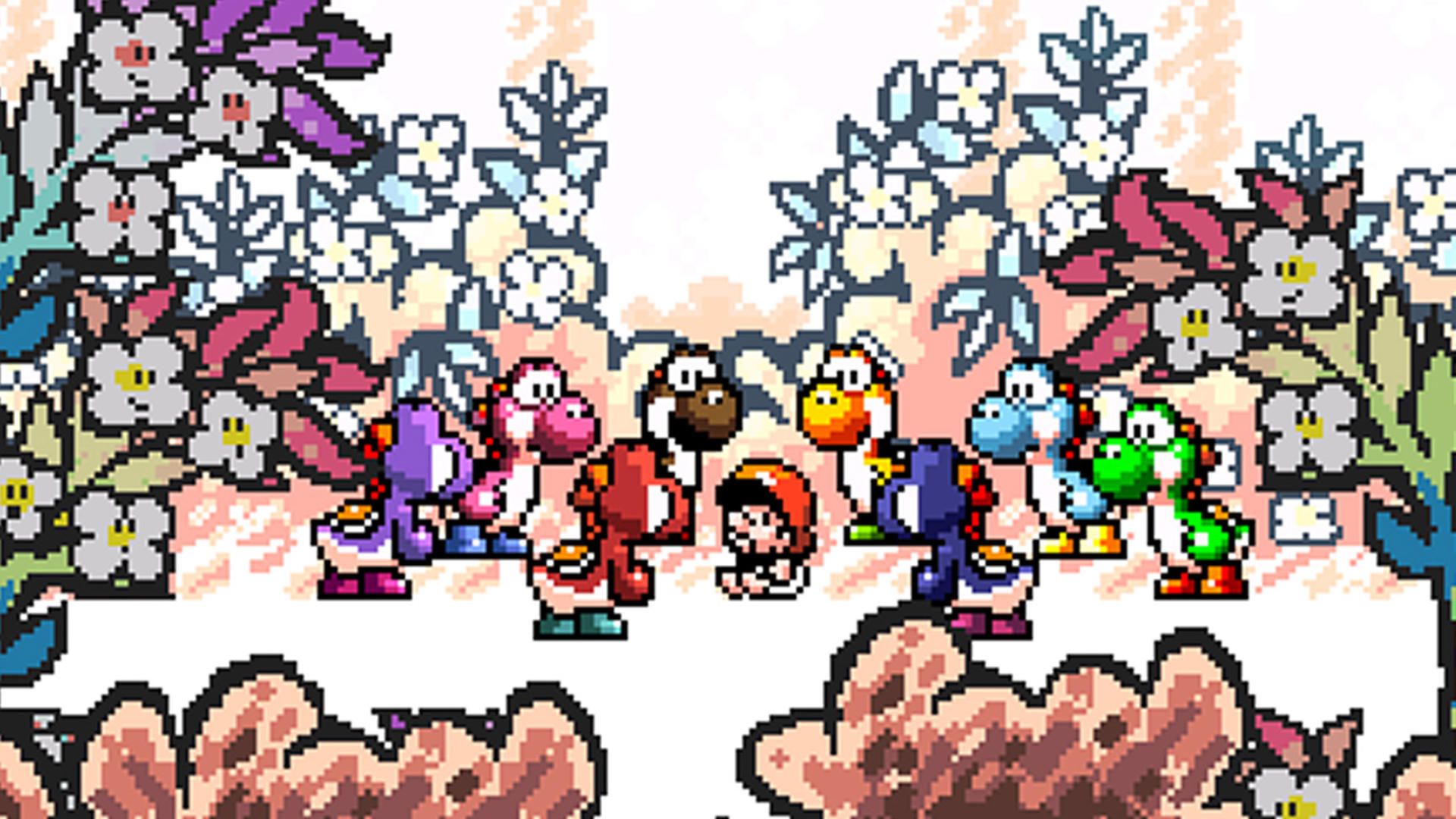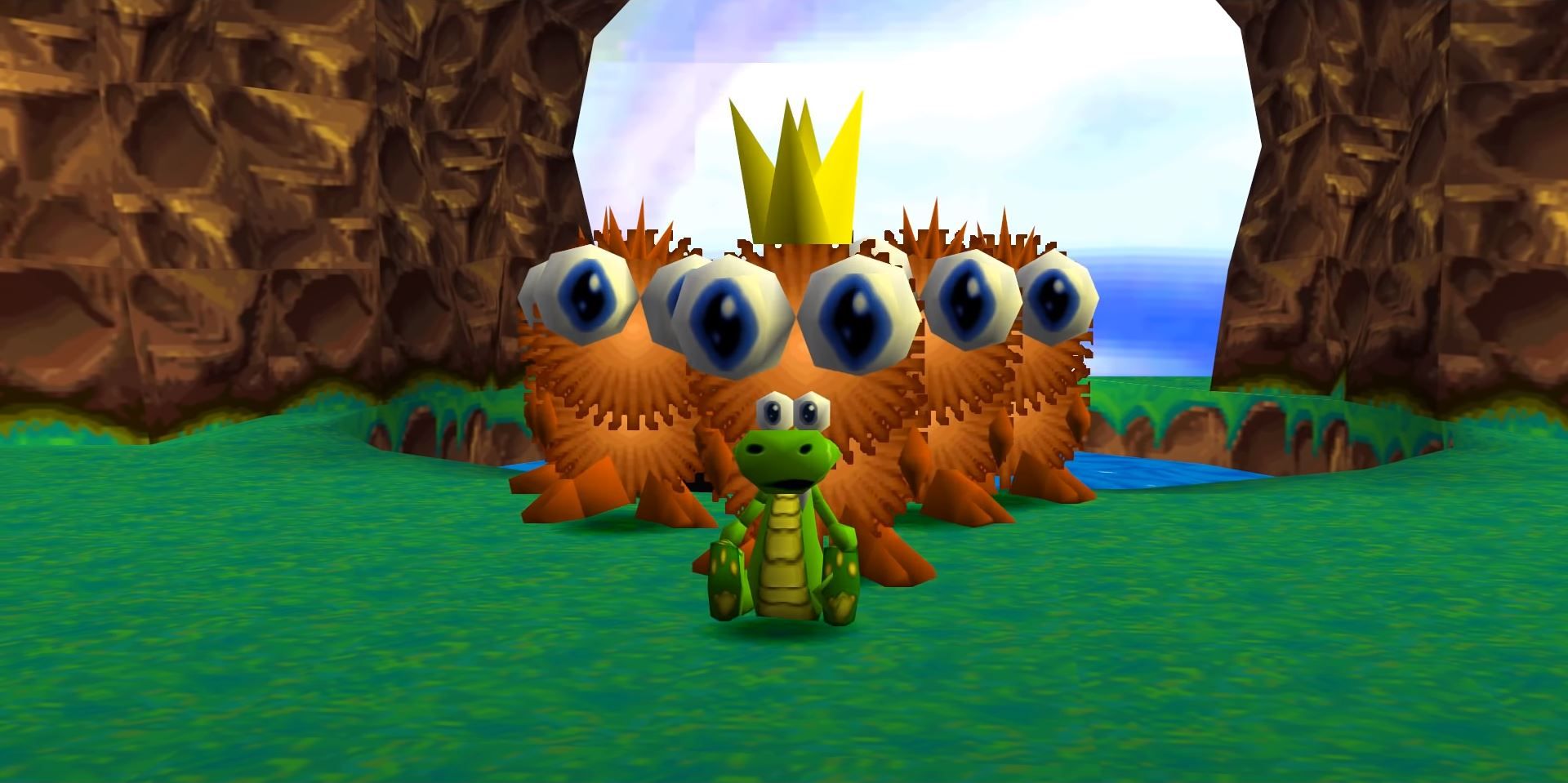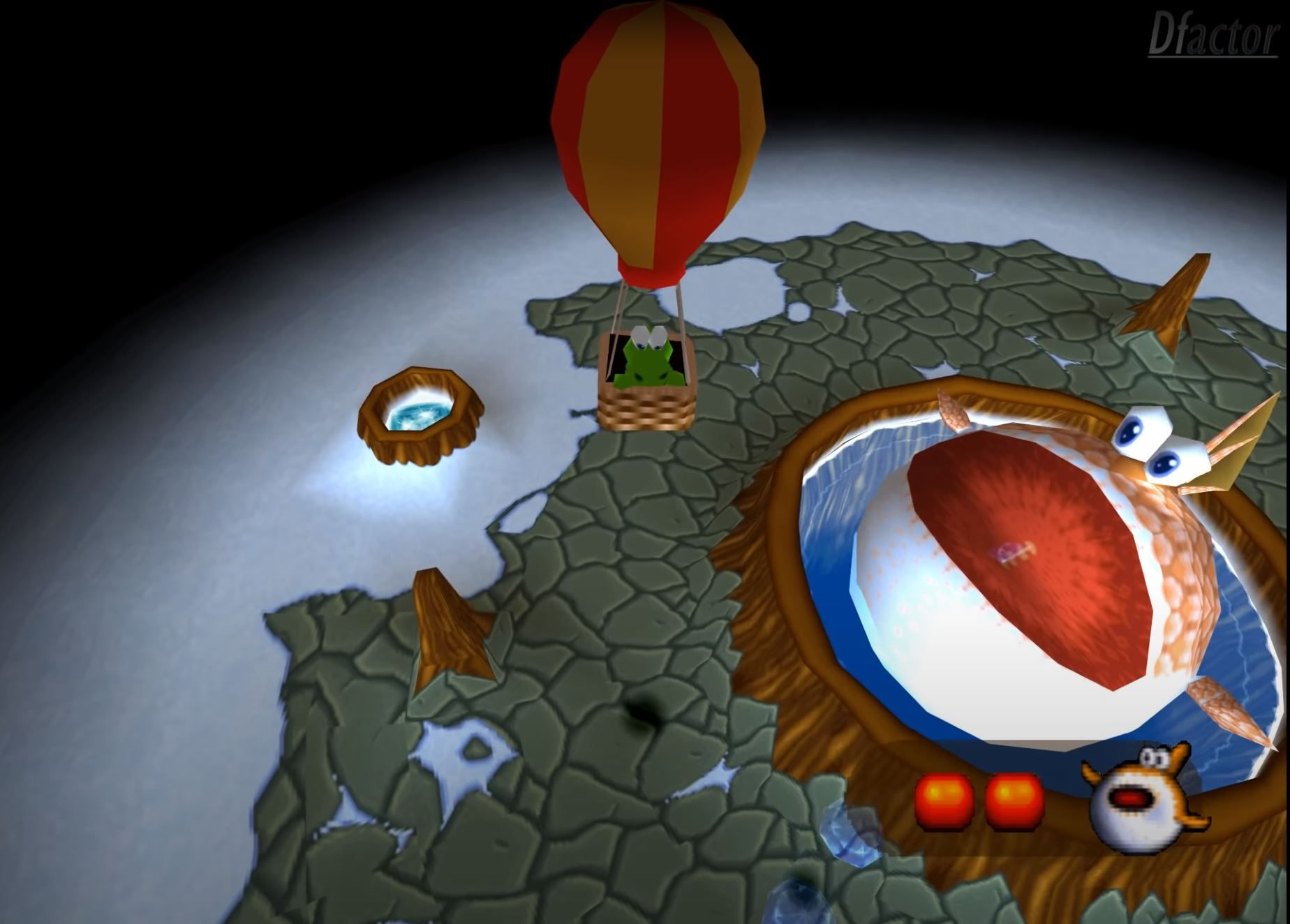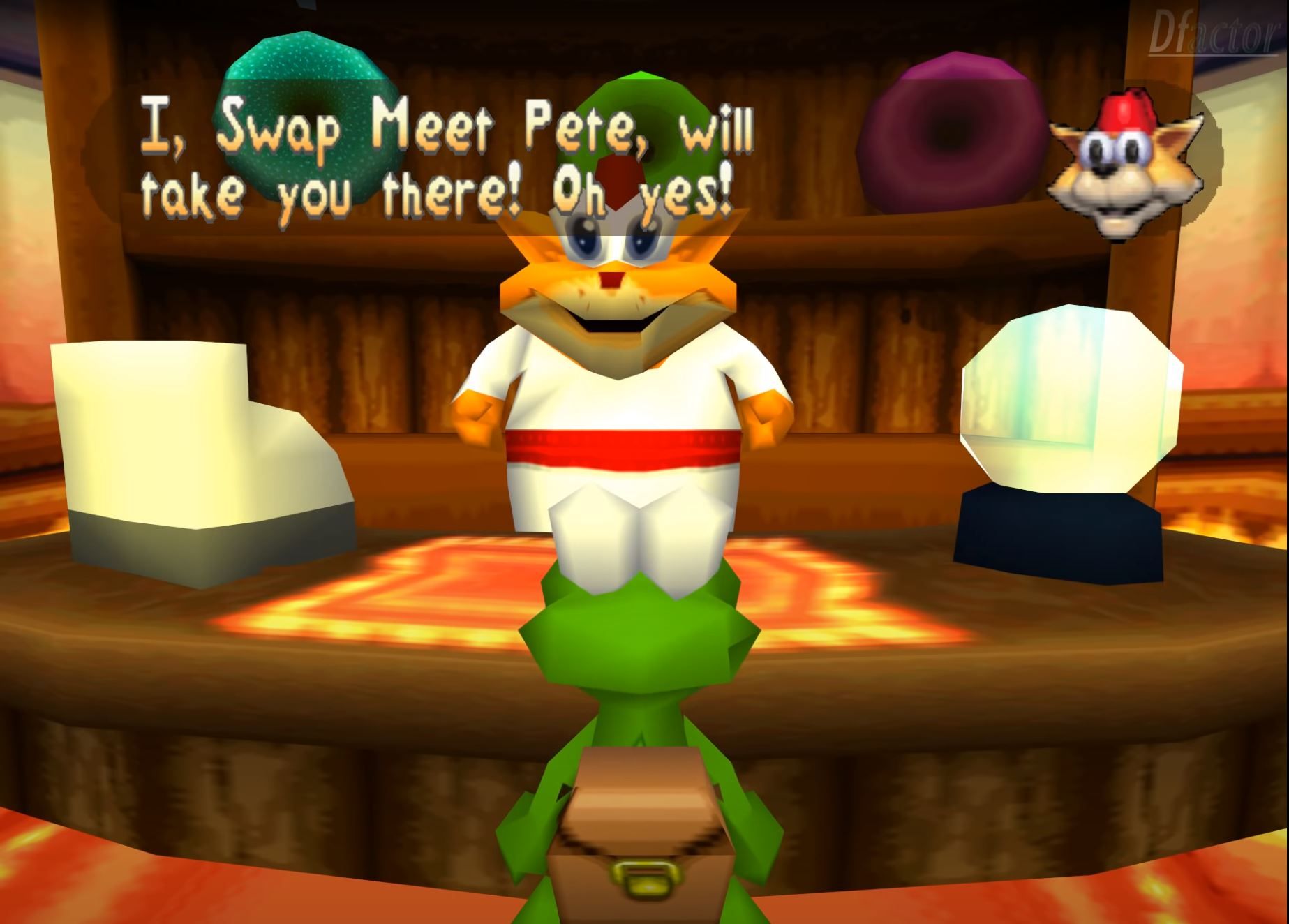Nic Cusworth, lead designer on Croc: Legend of the Gobbos, follows the game on Twitch. Occasionally, he likes to pop into people’s streams and chat with them about it. “I saw someone playing it the other day who called it the Dark Souls of PS1,” Cusworth tells me, laughing. “We learned a lot, we don’t make games like that anymore.”
Last week, Cusworth sat down with me for a chat about the legacy of Croc over Zoom from his home office in Sheffield, England. Nearly 24 years after its release, Cusworth says he still has “a real fondness” for the character. “Quite a lot of people played it,” he explains. “But it was never the kind of high profile game that Crash Bandicoot and Spyro were. So when it gets mentioned, people are like, ‘Oh, I remember, yeah I played that!’ Now I’m working with people who are of that age where they played it as a kid, and when they find out I was the lead designer it’s like, ‘Oh my God!’ and it’s really, really nice.”
Croc has seen a bit of renewed interest lately, in part because of speedrunners. Recalling the first time he looked up Croc on Twitch, Cusworth says, “I think I just typed in Croc and someone was speedrunning it and I was like, ‘What are you doing? Why are you doing that? You’re breaking my game!’ Obviously people pretend to be different people on the internet, but eventually they did work out that [I was the actual developer of Croc]. That was the first time I’ve done a Q&A on Twitch.”
It’s fitting that Croc would find a niche as a speedrunning game all these years later, considering that it actually began as a Yoshi racing game. Argonaut Games found early success in the ‘90s while working with Nintendo to create the Super FX coprocessor for the SNES. Using this new technology, Argonaut co-developed the original Star Fox as a demonstration of the chip’s advanced rendering capabilities. After development concluded on the ill-fated Starfox 2, Argonaut decided its next challenge would be a 3D platformer. “Back then I’d always thought about how you would make a 3D platform game using the Super FX chip and it seemed impossible,” Cusworth says. “There’s just not enough polygons. It would have to have been so abstract, but I’m not sure it would have been any fun.”
In 1994, as the studio was finishing up work on a game called Creature Shock, an animator at Argonauts named Marcus Morgan created a test animation of Yoshi running through a simple 3D level. It wouldn’t look like much now, Cusworth says, but back then, he was absolutely blown away. “It was really the first time probably anyone had seen what the NES Super Mario World looked like in 3D,” he says. “I don’t think anybody had ever thought about that as a thing.”
The prototype featured Yoshis running along an obstacle course with lots of platforming action and obstacles to avoid. Studio founder Jez San brought the demo to Nintendo to pitch it as a Yoshi racing game, but Nintendo didn’t seem interested, at least at the time. “I believe they were very quiet on their reaction to it,” Cusworth says. “I don’t know how much of this is true, but I think it did influence some aspects of Mario 64. Maybe it was interesting for them to see what their world looked like in 3D. I think they would have gotten there anyway, I’m not trying to take any credit for Mario 64, but it can’t have hurt.”
Argonaut moved onto other projects for a time, including the development of a new version of the Super FX chip for an unreleased Hasbro VR headset. When the PS1 reached the UK in 1995, the studio found new energy. “We didn’t have early PlayStation dev kits,” Cusworth explains. “I don’t think that was a thing back then for studios to get them early, unless you were a Namco or a Sega. So it was only when the PlayStation launched and we started to see all of the launch titles for it [that] we were like ‘Yes! This is finally something we do. It’s amazing.’”
The initial design for Croc came from an unlikely place. Simon Heating, who worked on the IT support team at Argonaut, doodled a crocodile character that caught Cusworth’s eye. This first version of Croc was much chubbier and tougher looking than what the final Croc ended up being, but it nonetheless inspired Cusworth. “I must have been just finishing something off and I was hanging around the desks with these guys and they were like ‘Do you think you can do something with this?’,” he remembers. “And I’m like ‘I think I can absolutely do something with this’” The team took the concept to San and pitched a 3D platform game, with the PlayStation as the main target.
Cusworth explains that the design for Croc wasn’t meant to resemble Yoshi. “Weirdly,” he says. “We never even thought about the comparison of it, because it’s such a different character to us.” Still, he admits that Yoshi’s Island was a huge influence on the game. “We were obsessed with Yoshi’s Island,” Cusworth says “That’s what we wanted to try to bring to 3D.”
When development began on Croc, the 3D platformer genre didn’t exist yet. “When we started there was nothing,” Cusworth explains. “There were no reference points, no touch points. How do you play a 3D platform game?” Super Mario 64 was still a year away when development on Croc began, as was Crash Bandicoot, and Spyro wouldn’t come out for three more years. Whatever Argonaut wanted to do with Croc, it would have to figure out how to do it itself. “We must have built hundreds of levels for that game and scrapped hundreds of [them],” he explains. “You come in, you try something, maybe that didn’t work, or maybe you just take that bit of it and put it into something else. It was a highly creative time.”
Argonaut was a small team of only 15 people. It didn’t have the kind of resources Nintendo had to hire engineers that would push the hardware as far as it could go, but that didn’t stop it from taking on this seemingly impossible challenge. Its determination to boldly go where no developer had gone before is very much reflected in its character, Croc. Unlike Mario, who flips and twirls through his games with skill and grace, Croc is an amateur hero trying his best to rise to the occasion. “He was meant to be a plucky hero,” Cusworth explains. “There is definitely a determination in [him]... the kind-heartedness and innocence of it all, I really wanted to get some of that across.”
The game launched in 1997 to middling reviews but fairly strong sales. “I remember it reviewing pretty badly in the UK,” Cusworth says. “I think people didn’t get it. People saw it as like ‘Well it’s not Mario 64, It’s a pretender to that throne.’ Six out of ten [scores] were a little disheartening. I’m not saying it’s a great game, but I don’t think at the time it was a six out of ten.”
Luckily, the publisher, Fox Interactive, was really happy with Croc. “I remember one of the marketing people saying women love it,” Cusworth recalls. “A couple would go into a game store and the guy would want Blood Fist 22 or whatever, and the girlfriend would be like ‘Oh, look at that, that looks cute, I’ve got a backpack like that.’ Those little backpacks were the fashion at the time. So a lot of people picked it up because it was something they felt like they could play with their girlfriend. It was sort of appealing to a market that was only just starting out.”
Croc had a number of things going for it when it came out in 1997. It was a family-friendly game on the original PlayStation, a console that was edging more towards mature titles each year. It was also a cross-platform game, which was a distinction unique to Croc. “I know in the UK a lot of people had it on PC,” Cusworth says. “That was a very unusual game for that market. I think it was our thing to be cross-platform. Crash was always going to be PlayStation, Sonic was always going to be Sega, Mario was obviously always going to be Nintendo, so we were something that was played on whatever you’ve got.”
Development on Croc 2 began immediately. Cusworth acknowledges that Croc 2 wasn’t received as well as the first game, but there are things he still admires about the sequel. “I’m kind of proud of the amount of variety in that game,” he says. “That was kind of my thing. Croc was an exercise in minimalism. We had a certain amount of space and a certain amount of things we could do. Let’s try to take that to the max, let’s see how far we can push. I really wanted a theme to every level, something a little bit unique about every level. The downside of that is some stuff probably isn’t as polished as it probably should have been. But I really, really do like the amount of variety to all of the different levels.”
Croc 2 also allowed the team to build bigger levels, thanks to a process called depth cueing, and focus more on worldbuilding and storytelling. Croc’s innocence and charm were even more prominent in the sequel. The team went all in on their wholesome vision for Croc 2, but the critics were even harsher this time around.
When Croc 2 came out, the next generation of consoles was on the horizon. The industry was broadly moving towards more mature games, and Croc was left behind. “It seemed like at that time there was only one wave of gamers and it was the kids who’d grown up with NES, Super Nintendo, then PlayStation [when they were] 18-20,” Cusworth explains. “Now with PlayStation 2, ‘I’m in my late 20s now and I don’t want to be playing any of that kiddy stuff.’” The games developed for the PS2 were largely defined by an attitude, and titles like Jak and Daxter and Ratchet & Clank fit that shift. “It’s not really what Croc was about,” Cusworth says. “He was kind of a character out of time very quickly.”
Croc did have something of a legacy, however. The Croc engine was used to make the Harry Potter games on the original PlayStation as well as a number of Disney games like Emperor's New Groove and Aladdin in Nasira’s Revenge, all developed by Argonaut. The Emperor's New Groove team later went on to found Rocksteady. “I might be wrong because this is all hearsay,” Cusworth says. “ I think the scripting language that we created for Croc was used in these games… I know the first game that they did, Urban Chaos, might have used it. Some of the genetics of Croc permeate through a lot of different projects. It’s really nice to have that stuff sort of persist.”
At one point, Cusworth pitched Croc 3 to Xbox as an online multiplayer game. The game would have taken place after Croc reunited with his parents in Croc 2. Now in the land of his species, Croc would train other Crocs to face challenges and go on adventures of their own. The game would have included a single-player mode, as well as both two-player and four-player co-op, and feature cooperative puzzle solving. “I think the idea was liked,” Cusworth explains, “But Argonaut was going through a tough patch. Things were not working out. The money from the Harry Potter games was drying up and it was a company that struggled to make the transition from PlayStation to the PlayStation 2 era.” UK studios like Argonaut were used to working on small teams making games with small budgets, but in the PS2 and Xbox era, a lot of developers struggled scaling up to the teams of 30-40 you would need to make new games. Croc for Xbox never moved forward, and Cusworth left the company.
Argonaut Games’ founder Jez San acquired the rights to Croc when the studio liquidated in 2004. Since then, San has moved on from game development. According to Cusworth, he set up an online poker company after Argonaut closed. He also started investing in bitcoin “very, very early on,” Cusworth says. “Which means that he probably never needs to think about money ever again.” A Croc remake probably isn’t on San’s mind, Cusworth thinks - but if the right amount of money was offered, Cusworth says, “It’s something that he’d happily do… He said maybe one day, but I don’t know what the criteria would have to be for him to be interested in it.”
Cusworth continues to be amazed that Croc still has fans today, almost 24 years later. “It means a lot that people have fond memories of the game,” he says. “I’m just constantly surprised. When you make a game, you’re always thinking about the next one… I’ve always wanted to move on to something new, learning something new. It’s always about the challenge of, ‘Well I wouldn’t know how to make that game, so I think I’d like to work on that, please.’ I always look forward to the next challenge so I don’t really reminisce about anything I’ve worked on. But that doesn’t mean I’m dismissive of it at all. Absolutely the opposite. It’s a privilege that people remember this game for so long and still play it.”
I suggested that perhaps Croc is remembered so fondly because, ultimately, it’s just an incredibly lovely game. Cusworth seemed to agree: “Maybe that’s why it stays in people’s minds, because there was nothing cynical about the game. It just is what it is. It wears its heart on its sleeve.”


